Hitting the Marks with Motion Graphics
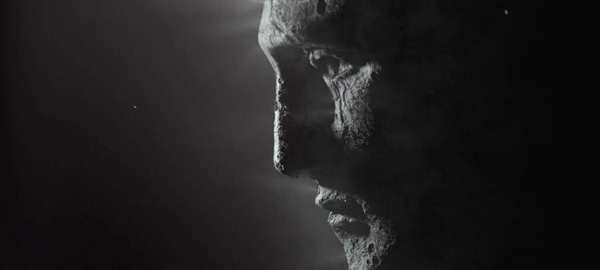
Raoul Marks is an award winning motion artist who lives in Sydney, Australia and works for Elastic studio in Los Angeles. Raoul and his team, led by creative director Patrick Clair, are responsible for some of the most recognised television titles sequences, including Emmy Award winners ‘Man in the High Castle’ in 2016 and ‘True Detective’ 2014, and Emmy nominees ‘The Night Manager’ and ‘Halt and Catch Fire’. Raoul also designed and produced the opening titles for the 2015 Semi-Permanent design conferences, a nominee at the SXSW Film Festival.
Digital Media World asked him about his approach to projects, especially titles design. We found out about some of his techniques and tools – as well as a few of his favourite sources of inspiration.
Raoul studied design at Curtin University in Western Australia in the early 2000s and started working as a graphic designer. After spending some time in the UK working in film advertising, he returned to Sydney and Melbourne in about 2010, when he started to focus on motion graphics for television and film.
Motion Graphics – Artistic and Professional Expression
At a professional level, Raoul pursues motion design as a member within his team, working very closely with a creative director. Nevertheless, the process of trying to reach a common visual language, while executing a very specific task, is a complex but rewarding artistic challenge for him. Limited by the simplicity of language - their common denominator – the team’s ability to develop a shorthand over time has helped them communicate more fluently.
'Westworld' Titles - Elastic
A recent project Raoul worked on at Elastic.
Raoul said, “Looking towards client and audience more broadly, it’s interesting to see how our work is interpreted. It’s not always as intended, and sometimes that’s great. A few episodes into ‘True Detective’, for example, people were saying the titles had clues as to who the Yellow King was. At that point we hadn’t even watched the full series and I had no idea what they were talking about.
“Therefore, from an audience perspective, I think you can over-manage and over-think a project. But if you can make something that feels new, that feels novel and excites you in a way that’s hard to reduce to a logical statement, then you’re a good way toward creating something that will make an impact in the wider world.”
Frustrated Filmmaker
Essentially, because an artist is trying to translate what is in his or her mind’s eye to the page or screen, all creative endeavours potentially lead to some frustration. This frustration is part of the reason Raoul moved into computer graphics and animation. “I’m basically impatient and want to get the images out as quickly as possible,” he said. “Working with digital tools has particular value because it’s such an effective process. The smoother and quicker that translation is, the more gratifying the emotional response is for the artist. I think that is why I’ve leaned towards digital tools.”
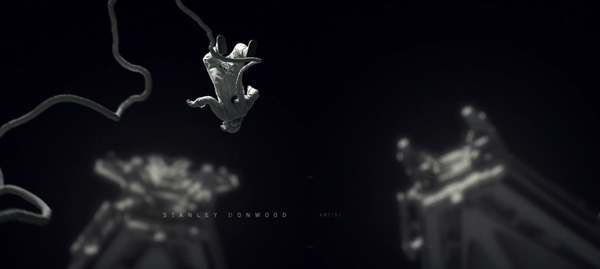
Compelling, original use of photographic and photoreal elements features in many of Raoul’s projects, bringing photography to life with animation and graphics without losing its original intention. “In essence, I’m probably a frustrated film maker,” he considered. “I think that’s what pushes me towards realism. That said, it’s not realism for realism’s sake that interests me. Real world photography is often a very carefully constructed process, not angling for realism, but to make an image that arrests the eye. I have the same goal – I’m just using different tools.”
Tools and Support
While at university, Raoul actually found the programmer-skewed approaches of many of the 3D packages in use at that time to be cumbersome and a barrier to progress. He said, “At that point, MAXON Cinema 4D was set up in a way that made it easy to jump in as a novice and get good results very quickly. That initial quick reward loop made it addictive, and kept me using it on and off over the last decade.
“It has evolved over the years, becoming resilient and versatile for many diverse applications, but with very solid core tools. In the new version R18, support for Alembic was extremely useful, and the updates to the knife tool and the polygon pen have been great additions.
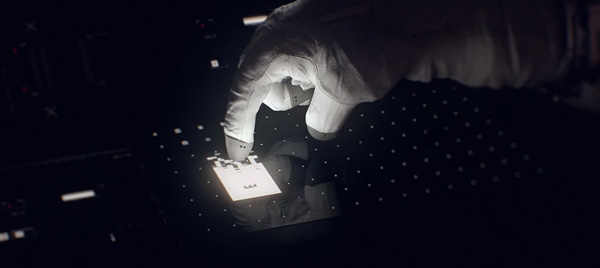
“In those days we didn’t have nearly the same support network as we have now. We felt a bit like the new kids on the block but, slowly and surely, over the years the user base has grown steadily to the point where it seems to be one of the biggest groups of artists. If you run into a snag, an answer is usually a short Google enquiry away, and we have a myriad of almost exclusively Cinema 4D websites like GreyscaleGorilla, helloluxx.com and lesterbanks.com.
Plugging in
It also plugs in with a lot of other tools – thankfully, Raoul says, CGI tools have become quite agnostic regarding different inputs and outputs. This means Cinema 4D is often able to work as the mothership for a whole group of tools for specific tasks - tools like 3D Coat, Fusion 360 and Megascans give you a lot of power for creative output.
Most important for Raoul was the development of the Octane Render engine. “It has fundamentally changed the way I work because, as a freelancer with my own gear, I don’t have access to a large render farm. Octane basically replaces a render farm with the power accessed through modern graphics cards,” he said.
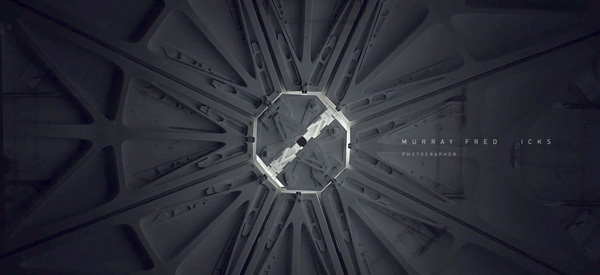
“Consequently, and more important for me as an artist, it allows me to light and texture in real time. It takes a large enough chunk of time out of the creative feedback loop and makes the number of iterations you can go through almost infinitely larger. That makes a huge difference when it comes to creating complex, realistic visuals. The fewer technological limitations we have to get involved with, the closer we get to the artists’ holy grail - being able to perfectly translate what’s in your head to the page.”
New Projects and Visualisation
Raoul talked about launching into a new project and the challenge of visualising a client’s narrative. “When we start on a new title design, of course, we’re primarily informed by the imagery, content and themes of the show. The pitch document goes a long way to interpreting that aesthetic and fusing it with our own influences and interpretation of the story,” he said.
“But personally, I’m often drawn to either focus on the macro or the micro. Since the show itself will obviously be exploring the meat of those narratives, the extended themes and meaning, the titles shouldn’t be merely retelling those points. It should circle around them, alluding to something more symbolic about the overall narrative message, or focusing in on a minute detail that reflects a wider statement about the story.”
'Man in the High Castle' Titles - Elastic
Emmy Award winning project, 2016.
For example, the titles sequence they created for ‘Halt and Catch Fire’ shows an imagined, impossibly close-up sequence of the electrical signal running along wires and mainboards to illuminate the little flicking light at the front of an ‘80s-era PC. In itself, it’s a look at a mundane operating procedure for a computer from that time, but used allegorically to illustrate the competing forces driving young entrepreneurs towards a new ‘technological dawn’. The birth of a new idea and the great pressure these characters were under transferred neatly into a metaphorical world of electrons and circuitry.
Raoul said, “That double meaning is often a good area to explore as it’s conceptually interesting for the viewer as well as allowing you to make broad, symbolic comments about the show’s themes without having to explicitly depict them. A great example of this is the titles for ‘Dexter’. It’s simply a man making his breakfast, but filmed in such a way as to allude to the more sinister intentions of the protagonist’s double life.”
Inspiration
Thinking in this way - drawing on connections that exist in viewers’ memories to arrive at a concept that is fresh and exciting – demands inspiration and dynamic sources of reference. Raoul tends to lean towards films and photography as central sources of inspiration. Film has been a great educator for me. Classics like ‘Blade Runner’, ‘Alien’, ‘2001’, ‘Videodrome’ and ‘Akira’ [Katsuhiro Otomo] have all been influential in informing his style.
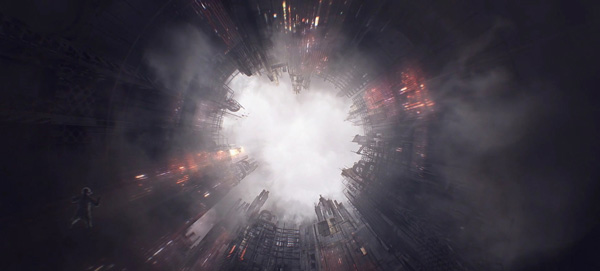
He said, “Those films are not only visually very striking but also manage to get under your skin, with a certain atmosphere or tone to them that’s hard to pinpoint. They are escapist but also leave you with a slightly uneasy, existential feeling. Although I’m not making feature films, those tonal qualities are what excites me about image making and I often go back to them to start my brain ticking over.
“Recently, I’ve been getting into Jeffrey Smart’s paintings as well - he had an amazing sense for colour and geometry and was a master at creating an unnerving image. Contemporary inspirations come and go, though what I find exciting currently is ‘Under the Skin’ by Jonathan Glazer, anything by Adam Curtis - and I’m also keen to sit down and watch the latest series of ‘Black Mirror’.”
Research for reference usually starts with sources outside the graphics industry as well. Not only photography and film, but other fields like contemporary art, sculpture, painting and more experimental forms can be very productive. Raoul noted, “A lot of artwork that may seem impenetrable to a general audience, but when reinterpreted and placed in a different context, it can be effective in creating striking imagery. I think we benefit from bringing in inspiration from as wide a field as possible - you could call it cross-pollination.”
Top Marks
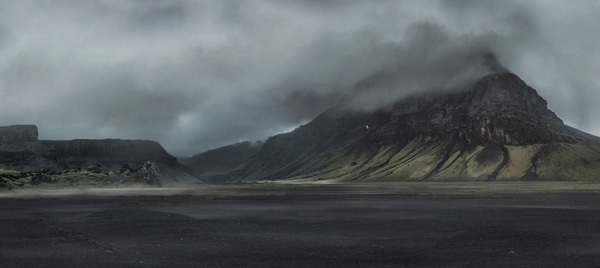
Winning awards is inspiring in itself. Seeing his team’s work recognised with an award or nomination makes him feel extremely lucky both to work with some very talented people, and to get paid for what he and his colleagues do. “Usually, it doesn’t feel like work. Patrick Clair, my Director at Elastic, has been consistently coming up with brilliant ideas, so a large part of my success is owed to his genius efforts,” said Raoul.
“It’s hard to tell what’s going to strike a chord with the voting audience, but I think there’s something seriously brilliant about Philip K Dick’s original novel that shines through in the TV adaptation. The idea of an alternate universe where the Axis won the Second World War generated a plethora of symbolic imagery for us to work with. Shots of the Nazi eagle emblazoned over America’s bald eagle create a huge list of connotations. I think that subversion of American symbology led to the titles’ idealised, classical quality and thus winning the award.
“What I hope comes from achievements like the Emmy Award wins is the freedom and support to explore more risky and innovative ideas in our work. I’ve already found it surprising how open-minded and progressive the clients we work with are about the concepts we put to them. If I can continue to work on titles projects for the near future, I’ll be very content. It’s a privilege.” raoulmarks.com
Words - Adriene Hurst
Images - Still images in this article come from the 2015 Semi-Permanent titles project, courtesy of Raoul Marks.
Other videos, courtesy of Elastic:
Westworld
Client: HBO
Director: Patrick Clair
Lead Animator / Compositor: Raoul Marks
Design & Visual Research: Paul Kim, Jeff Han, Felix Soletic, Maxx Burman, Henry DeLeon, Dan Alexandru.
Storyboard Artist: Lance Slaton
Lighter: Shamus Johnson
Animator / Compositor: Yongsub Song
Head of CG: Kirk Shintari
3D Artists: Jose Limon Jessica Hurst, Dustin Mellum, Rie Ito, Joe Paniagua, Mike Kash, Ken Bishop
3D Rigging: Josh Dyer
Reference Photography: David Do
Producer: Ben Foster
Supervising Producer: Carol Salek
Head of Production: Kim Christensen
Man in the High Castle
Client | Scott Free Productions
Director | Patrick Clair
Lead Animator and Compositor | Raoul Marx
Design | Paul Kim , Kevin Heo , Sam Cividanis
CG Modeler | Jose Limon
Producer | Jamie McBriety
Executive Producer | Jenn Sofio Hall


















